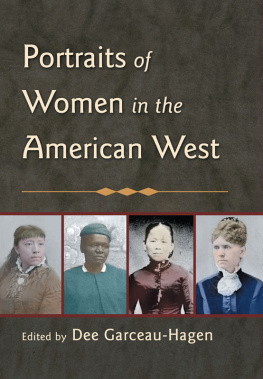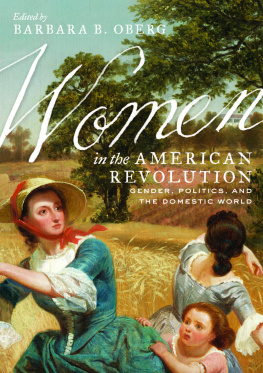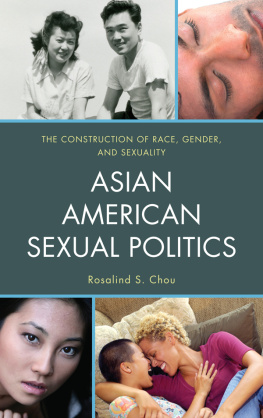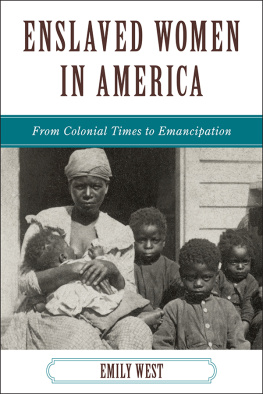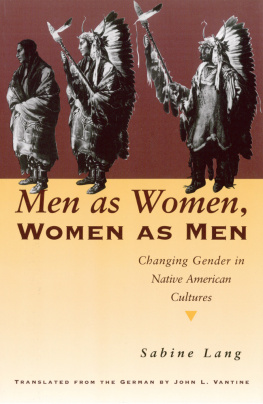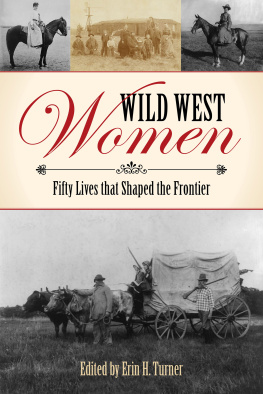Portraits of
Women in the
American West
Portraits of
Women in the
American West
Edited by Dee Garceau-Hagen
Cover image: (from left to right) Sarah Winnemuca in Victorian Dress. Courtesy of the Nevada Historical Society. Portrait of Mary Fields. Courtesy of the Archives of the Ursuline Convent, Toledo, Ohio. Portrait of Polly Bemis. Courtesy of the Idaho State Historical Society. Portrait of Frances Fuller Victoria, 1878, San Francisco. Courtesy of the Oregon State Library (WPA Series 4, General #2741b).
Mining a Mythic Past: The History of Mary Ellen Pleasant, in AFRICAN AMERICAN WOMEN CONFRONT THE WEST, 16002000, edited by Quintard Taylor and Shirley Ann Moore. Copyright 2003 of the University of Oklahoma Press. Reprinted by permission of the publisher. All rights reserved.
Reclaiming Polly Bemis: Chinas Daughter, Idahos Legendary Pioneer by Ruthanne Lum McCunn reprinted from FRONTIERS: A JOURNAL OF WOMEN STUDIES, volume XXIV, number 1 (1997) with permission of the University of Nebraska Press. Copyright 2003 by the Frontiers Editorial Collective.
Prefiguring the New Woman: Frances Fuller Victors Refashioning of Women and Marriage in The New Penelope by June Johnson Bube, Reprinted from FRONTERS: A JOURNAL OF WOMEN STUDIES, volume XVIII, number 3 (1997) by permission of the University of Nebraska Press. Copyright 1997 by the Frontiers Editorial Collective.
Published in 2005 by
Routledge
Taylor & Francis Group
711 Third Avenue
New York, NY 10017 | Published in Great Britain by
Routledge
Taylor & Francis Group
2 Park Square
Milton Park, Abingdon
Oxon OX14 4RN |
2005 by Taylor & Francis Group, LLC
Routledge is an imprint of Taylor & Francis Group
International Standard Book Number-10: 0-415-94802-9 (Hardcover) 0-415-94803-7 (Softcover)
International Standard Book Number-13: 978-0-415-94802-9 (Hardcover) 978-0-415-94803-6 (Softcover)
Library of Congress Card Number 2005001697
No part of this book may be reprinted, reproduced, transmitted, or utilized in any form by any electronic, mechanical, or other means, now known or hereafter invented, including photocopying, microfilming, and recording, or in any information storage or retrieval system, without written permission from the publishers.
Trademark Notice: Product or corporate names may be trademarks or registered trademarks, and are used only for identification and explanation without intent to infringe.
Library of Congress Cataloging-in-Publication Data
Portraits of women in the American West / edited by Dee Garceau-Hagen.
p. cm.
ISBN 0-415-94802-9 (acid-free paper) -- ISBN 0-415-94803-7 (pbk. : acid-free paper)
1. Women--West (U.S.)--Biography. 2. Biography--19th century. 3. Biography--20th century. 4. West (U.S.)--Biography. I. Garceau-Hagen, Dee, 1955-
CT3262.W37P67 2005
305.4097809034--dc22
2005001697
For my sisters,
Pam, Madelyn, Sarah, and Karla
CONTENTS
LYNN M. HUDSON
ROSEMARIE STREMLAU
JUNE JOHNSON BUBE
ANNE M. BUTLER
DEE GARCEAU-HAGEN
RUTHANNE LUM MCCUNN
LINDA PEAVY AND URSULA SMITH
NATALIE A. DYKSTRA
LAURA WOODWORTH-NEY
ILLUSTRATIONS
PREFACE
This book began as a series of conversations with friends and colleagues about biographical essays as a genre in western womens history. Several of us had found compelling material on a particular woman in the course of doing research broader in scope, but we were unsure of what to do with it. For many of us schooled in gender studies, biography was suspect. It echoed the old great men approach to history, in which historical significance was defined by the study of famous individuals recognized for their leadership within institutionalized frameworks of power.
As we talked, it became clear that an alternative existed, albeit largely unexplored, that of writing biography from the perspectives of gender history and the new western history. And so this volume was conceived as a series of biographical essays in which gender is a category of historical analysis that both informs, and is informed by the conceptual boundaries of the new western history. The results are rich in individual detail and interpretive discovery. For this, I thank the contributors to this volume; it was a privilege and a pleasure to work with each one.
My one regret for this anthology is the absence of an essay on a woman from the Hispanic cultures of the American Southwest. There is excellent scholarship in this area and when I put out the call for papers and recruited at conferences, the field was promising. Several scholars I spoke with had intriguing material, but were committed to other projects already in progress, and so the timing was not right for them. In consequence, this collection includes women from the plains, the intermountain West, the Rocky Mountains, the Pacific Northwest, and California, but not from the American Southwest. I hope to have the opportunity to do a revised edition to remedy this gap.
This project owes much to archivists, the experts upon whom we depend for access to sources that give life to our work. I would like to thank Julianne Ruby, archivist at the Ursuline Center Northwest, Great Falls, Montana; Judy Ellinghausen at the Center for Great Plains Studies in Great Falls, Montana; and Jodi Allison-Bunnell, Director of the Mansfield Library Archives and Special Collections at the University of Montana in Missoula. They provided invaluable help as I researched the life of Mary Fields. In addition, Merrialyce Blanchard at the Nevada Historical Society; Carolyn Bowler at the Idaho State Historical Society; Sister Kathleen Padden, O.S.U. at the Ursuline Convent Offices in Toledo, Ohio; and Richard Collier at the Wyoming State Historic Preservation Office helped locate and secure photographs and illustrations for the essays in this volume. I also would like to thank Terry Bender and Barbara Winters for sharing their memories and photographs with Linda Peavy and Ursula Smith; as well as the staff at the Cascade Historical Society, Cascade, Montana, who generously shared their time and expertise.
Special thanks go to Terry Petersen and Nicki Whearty, who welcomed me to their homes during the course of my research. Their friendship and hospitality are woven into the history of this project. So too, I appreciated the professionalism of my editors at Taylor and Francis, especially Rachael Panthier, Kimberly Guinta, Dan Webb, and Rebecca Condit. Karen Wolny talked over the merits and challenges of biographical essays with me, and for that I am grateful as well. Finally, Susanne Stoeckmann provided valuable research assistance during the early stages of this project.
In closing, I thank my husband, Ron C. Hagen, my partner in life, and my step-daughters, Carrie and Katie, all of whom make life sweet.
INTRODUCTION
Dee Garceau-Hagen
An African-American boardinghouse keeper, a Northern Paiute activist, a California writer, an Ursuline nun, an African-American mail driver, a Chinese immigrant, a Chippewa-Cree basketball player, a Wyoming writer, and a rural Anglo club founder challenge our assumptions about women in the American West, and illustrate the narrative complexity of western and womens history. Nine biographical essays herein present the lives of women on the northern plains, in the intermountain West, the Pacific Northwest, and California. Each of the women profiled offers a window on gender relations in these regions during the late nineteenth and early twentieth century. Taken together, their lives reveal interweavings of race, gender, and class as plural sources of identity, and as unstable categories of power and privilege. For many western womens historians, however, biographical portraits have been suspect. Too often they echoed an old conceptual trap, the study of notable women. If historical significance were defined only in terms of exceptional women whose deeds merited biographical study, then the lives of ordinary women would go unexamined. Much of western womens history, then, has cast a wider net, exploring patterns in the lives of women grouped by cultural identity, region, or era, to create a gendered analysis of the American West.1 Implicit in these studies is a rejection of the heroic model of western history in which the American West bred remarkable individuals who lived and died larger than life.

